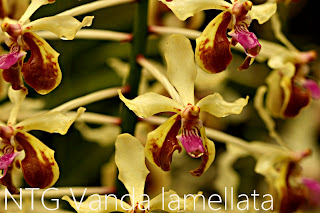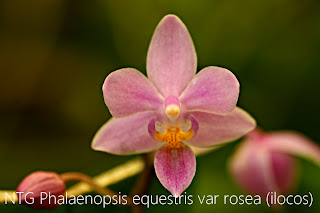Pssst..punta na lang kayo sa http://www.flickr.com/photos/likas_halamanan/ Mas updated doon!
Thursday, February 16, 2012
Tuesday, February 14, 2012
Monday, February 13, 2012
Monday, January 30, 2012
Monday, January 16, 2012
Friday, January 13, 2012
Monday, January 9, 2012
Sunday, January 8, 2012
Cirrhopetalum (Bulbophyllum) trisetum




This plant was from Negros island. It has a number of synonyms (Bulbophyllum clavigerum [Fitz.] F. Mueller 1884; Bulbophyllum kenejianum Schltr. 1913; Bulbophyllum layardii [F. Meul. & Krnzl.]J.J.Sm. 1912; Bulbophyllum trisetum Ames 1912; Cirrhopetalum africanum Schlechter 1915; Cirrhopetalum clavigerum Fitz. 1883; Cirrhopetalum kenejianum Schlechter 1915; Cirrhopetalum layardii F. Meuller & Krnzl. 1894; Cirrhopetalum longiflorum [Thou.]Schlechter 1915; Cirrhopetalum thomasinii Lindley ex Josst 1851; Cirrhopetalum thouarsii Lindley 1824; Cirrhopetalum thouarsii var. concolor Rolfe 1892; Cirrhopetalum trisetum (Ames) Garay, Hamer & Siegerist 1994; Cirrhopetalum umbellatum [Forst.] Hkr. & Arn 1832; Cymbidium umbellatum [Forst.] Spreng. 1815; Epidendrum umbellatum Forst. 1786; Inobulbum layardii (F.Muell. & Kraenzl.) M.A.Clem. & D.L.Jones 1998 ; Phyllorchis clavigera [Fitz.] Ktze. 1891; Phyllorchis longiflora Kuntze 1891; Phyllorchis thouarsii [Lindl.]Ktze 1891; Phyllorchis umbellata [Forst.]Ktze. 1891), and is very widely distributed, almost throughout the orchid world, except for the Americas.
The generic name depends on whether you are a splitter (Cirrhopetalum), or a lumper (Bulbophyllum, from section Cirrhopetalum).
One of the most striking Cirrhopetalums, in my opinion.
Subscribe to:
Comments (Atom)
































